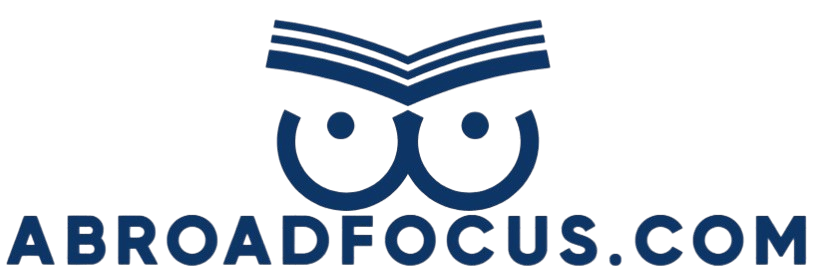Understanding the Importance of Cultural Fit
Cultural fit is an essential component in creating a thriving workplace. It transcends mere skills and qualifications, playing a pivotal role in employee satisfaction, collaboration, and the overall success of the organization.
This article delves into the meaning of cultural fit, its impact on companies, and the advantages of nurturing strong cultural alignment.
You ll also learn how to effectively assess cultural fit and explore strategies for cultivating a positive work environment that celebrates diversity and inclusion.
Dive in to uncover how cultural fit can truly transform your organization!
Contents
Key Takeaways:

- Cultural fit refers to the alignment between an individual’s values, beliefs, and behaviors with those of the organization. It plays a crucial role in creating a positive and productive work environment.
- A strong cultural fit can lead to increased employee satisfaction and retention, improved teamwork and communication, and higher levels of productivity and job performance. Poor cultural fit can result in conflicts, low morale, and reduced organizational success.
- Assessing cultural fit during the hiring process is essential. Utilizing various techniques such as cultural fit interviews and evaluations can help identify potential candidates who align with the company’s culture and values.
What is Cultural Fit?
Cultural fit refers to the alignment between your values, beliefs, and behaviors and the core values and culture of an organization. It plays a critical role in the hiring process, influencing your selection as a candidate and impacting your long-term satisfaction as an employee.
When there’s a strong cultural fit, it fosters a collaborative work environment that enhances team cohesion and overall employee satisfaction. Understanding cultural fit is essential for Human Resources managers, as it helps mitigate turnover costs and boosts overall productivity within the organization.
Defining Cultural Fit in the Workplace
Defining cultural fit in the workplace means grasping the synergy between your values and the core values of the organization. When your beliefs align with those of the company, you’re likely to experience increased engagement and motivation, creating a positive environment that enhances productivity.
This alignment can significantly influence your behaviors. When you resonate with the workplace culture, you’re often more collaborative, innovative, and dedicated to your role. You might even notice improved retention rates, as a strong cultural fit usually leads to higher job satisfaction, ultimately reducing turnover.
Human Resources managers play a crucial role in this process. They use various cultural evaluations to assess candidates during recruitment, ensuring that new hires integrate seamlessly into the existing workplace culture.
The Impact of Cultural Fit on Organizations
The impact of cultural fit on organizations is significant, shaping not just employee retention but also overall productivity and workplace dynamics.
When the right cultural alignment exists, it fosters an environment where individuals thrive, leading to enhanced performance and a more cohesive team atmosphere.
Benefits of a Strong Cultural Fit

A strong cultural fit within your organization significantly enhances employee engagement and job satisfaction, while cultivating a positive brand image.
When you and your team align with the company s values and mission, it instills a profound sense of belonging and purpose in your work. This synergy not only elevates morale but also contributes to improved employee retention rates.
Consider a tech firm that thrives on innovation and creativity. Such an environment often inspires long-term commitment from its staff, effectively minimizing turnover costs.
When team members collaborate in this kind of setting, it nurtures open communication and mutual support, leading to more innovative solutions and a vibrant workplace.
Motivated by shared goals, employees become true ambassadors for the brand, further enhancing its reputation in the external landscape.
Now is the time to assess your workplace culture! Consider how cultural fit influences your organization and share your experiences with your team.
Consequences of Poor Cultural Fit
The consequences of poor cultural fit can be quite harmful. It can lead to increased turnover costs and significant recruitment challenges for your organization.
When team members feel disconnected from the core values and mission of the workplace, it often results in decreased morale and engagement. You may notice behaviors like reduced collaboration and a lack of enthusiasm, which can further hinder productivity.
Such misalignments can create an environment filled with negativity. Individuals are less inclined to share ideas or support one another, stifling creativity and potentially leading to conflicts among team members. This ultimately undermines the teamwork necessary for high performance.
The ripple effects of this situation can erode trust and communication. It is essential to prioritize cultural alignment and foster a supportive work atmosphere.
How to Assess Cultural Fit
Assessing cultural fit is essential for you as an HR manager. You can achieve this effectively by employing targeted interview questions and conducting cultural assessments.
Interview Techniques and Assessment Tools
Utilizing effective interview techniques and assessment tools is vital for determining cultural fit during your recruitment process.
Incorporating strategies like behavioral interviewing which delves into past experiences and situational questions that gauge how candidates might tackle hypothetical scenarios can provide deeper insights into an applicant’s suitability.
Implementing group interviews offers a clearer perspective on how potential hires interact within a team dynamic and reveals their collaborative potential.
Cultural assessments allow you to compare candidates against the company’s values and work environment. By skillfully combining these techniques, you can significantly refine your selection process. This ultimately fosters more cohesive teams and enhances workplace morale.
Strategies for Promoting Cultural Fit

Promoting cultural fit involves implementing thoughtful strategies that cultivate a positive work environment, elevate employee engagement, and prioritize diversity in hiring.
Creating a Positive Work Culture
Creating a positive work culture begins with establishing values that resonate with employee satisfaction and promote team cohesion.
Implement recognition programs that celebrate individual and team achievements. This boosts morale and inspires excellence.
By fostering a collaborative working environment where open communication thrives, you invite diverse ideas and solutions to flourish. This ultimately enhances creativity and productivity.
When your organization s core values align with your own, you feel a genuine sense of belonging and purpose. This alignment energizes you and motivates you to work together toward shared organizational goals.
Addressing Diversity and Inclusion
Addressing diversity and inclusion is essential to your cultural fit hiring process. It ensures that hiring biases are minimized while nurturing a diverse workforce.
By implementing best practices, you can cultivate an environment that values unique perspectives and experiences. As an HR manager, your role is pivotal in this effort. You serve as an advocate for fair recruitment processes that actively work to eliminate prejudiced practices.
This includes training hiring teams to recognize and counteract unconscious biases, promoting varied talent pools that enrich workplace culture.
A diverse workforce sparks innovation and creativity and boosts employee satisfaction and retention. This leads to a more engaged and productive team.
By embracing diversity and inclusion, you strengthen your organization s resilience and adaptability in an ever-evolving marketplace.
Watch this video to learn more about cultural fit strategies:
Frequently Asked Questions
[Placeholder content for FAQs to drive engagement.]
Implement these strategies to enhance your cultural fit hiring process. For more information, feel free to reach out!
What is cultural fit?

Cultural fit means how well an individual’s beliefs, values, and behaviors match those of an organization. It measures the alignment with the group’s culture and expectations.
Why is understanding cultural fit important?
Understanding cultural fit is crucial for job satisfaction and performance. The right fit helps individuals thrive and makes a positive impact on the organization.
How does cultural fit impact the workplace?
Cultural fit strongly influences workplace dynamics, communication, and collaboration. A positive fit fosters belonging and improves work culture, while a poor fit can breed conflict and low morale.
Can cultural fit be measured?
Cultural fit can be hard to quantify, but various tools can help evaluate it. These include interviews, personality tests, and surveys about company culture.
What are the consequences of ignoring cultural fit?
Ignoring cultural fit can lead to high employee turnover and low job satisfaction. This oversight can also hinder diversity and stunt organizational growth.
How can one assess their own cultural fit?
Individuals can evaluate their cultural fit by examining their values and work style. Seeking feedback from current employees and researching the company culture online can also help.






